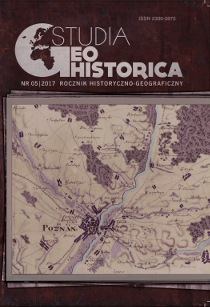Atlas Fontium
DOI:
https://doi.org/10.12775/20246Abstract
Modern science possesses tools of collecting, analyzing and disseminating information that the previous generations did not have. Alongside texts and images, we have acquired the ability to utilize data with a complex, multidimensional structure and new functionalities – from simple spreadsheets through databases on sophisticated portals with GIS applications. They are particularly important in historical geography, allowing for the effective use of data sets, their spatial analysis and cartographic presentation. Therefore, it is unsurprising that we would reach for these instruments, processing the rich statistical resources of sixteenth century tax registers in order to reconstruct the settlements and administrative borders. From its inception, the volume about Greater Poland in the series “Detailed Maps of the Sixteenth Century” prepared by the Department of the Historical Atlas was intended to transcend the traditional printed form. The collection of materials itself was carried out in spreadsheets and, later, in a relational database. Through the system of IDs and GIS operators, the data extracted from sources was immediately placed in a spatial context. We quickly came to the conclusion that the data should not simply be used in our work, but should also be published as source documentation. This edition and the reconstructed administrative structures and settlement network were closely related – together they formed the spatial database. We were then faced with the problem of publishing such material, because the publishers could not provide an offer that went beyond the traditional printing of text and images. As a result, we decided to solve the problem ourselves by launching the forum “Atlas Fontium.”1 At first, the initiative was supposed to be limited to a website, then the series “The Atlas of Sources and Materials for the History of Old Poland,” and, finally, a magazine. While the website and series did not diverge from their original concept, we decided that the periodical should be included in the magazine “Studia Geohistorica” as a separate subsection. The articles, which are accompanied by additional materials in the form of spreadsheets, spatial data and dedicated applications, will be printed in the magazine. They will be posted on the Atlas Fontium website, in a separate tab with the title of the periodical. The text of the articles will be published in both physical and digital forms. We are hoping that the authors will send us ready files, but the editorial office can also offer an appropriate supplement, if the article provided will be rich in spatial references. Helpful to both sides will be the use of relevant resources presented on the site, above all the IDs of settlements.
Published
How to Cite
Issue
Section
Stats
Number of views and downloads: 893
Number of citations: 0



